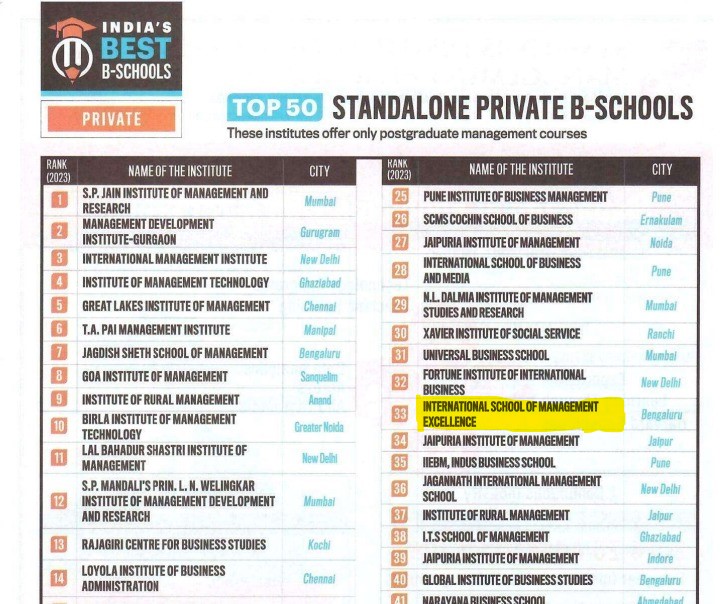24th December 2024
Reliance Industries ventured into the quick commerce segment with a landmark deal in October 2024 when it started delivering products within a time frame of 10 to 30 minutes. It’s not just a matter of convenience; it’s a strategic play against some of the well-established players in the segment, be it Zomato Blinkit and Swiggy Instamart and Zepto.
Reliance would try to create dedicated kiosks in such stores through its network of 3,000 supermarkets spread over 1,150 cities for faster delivery. The foray into the business is part of a bigger play of building up Reliance’s retail arm ahead of the IPO.
On the flip side, it is the challenge of integrating quick commerce into already-standing retail structures to function smoothly, deliver in due course, and remain profitable within a competitive market. And so, the newly appointed Head of Quick Commerce Operations holds the reins to this strategic problem.
The Quick Commerce landscape in India
A Thriving Market
Change in consumer behavior, internet penetration, and the rise of hyperlocal delivery models are driving Indian quick commerce at breakneck speed. The demand is largely driven by millennials and Gen Z for ultra-fast delivery of essentials, groceries, and more.
Key characteristics of the quick commerce market include:
- Speed: Delivery expectations range from 10 to 30 minutes.
- Cost Sensitivity: Despite operational complexities, pricing plays a pivotal role in customer retention.
- High Competition: Established players have set the bar high with optimized supply chains and customer-centric services.
- Operational Challenges: Managing inventory and last-mile delivery within tight timelines is a logistical puzzle.
The Barriers to Entry
For a newcomer like Reliance, challenges abound:
- High Operating Costs: Technology investments to delivery personnel all can add up fast.
- Customer Retention: Competing on service quality and price is a tall order.
- Profitability: Cost and razor-thin margins balance are the two issues.
Reliance’s Winning Ingredients
- Leveraging Infrastructure: Reliance’s extensive retail network, comprising over 18,000 stores across India , provides a significant advantage in the quick commerce sector. By utilizing these existing outlets as fulfilment centres, the company can efficiently process rapid delivery orders without incurring substantial startup costs associated with standalone delivery depots. This strategy leverages Reliance’s robust supply chain, ensuring a diverse product range is readily available for consumers.
- The Tech Edge: Reliance can leverage artificial intelligence (AI) and machine learning (ML) to enhance its operations by:
- Forecasting Consumer Demand: Utilizing AI and ML to analyse vast datasets, enabling more accurate predictions of consumer purchasing patterns.
- Inventory Optimization: Applying AI-driven analytics to manage stock levels efficiently, ensuring the availability of fast-moving items while minimizing overstock.
- Streamlining Last-Mile Delivery: Implementing AI solutions to optimize delivery routes and schedules, ensuring timely deliveries and improving customer satisfaction.
These initiatives should be able to enhance operational efficiency and customer experience.
- A JioMart Boost: By integrating quick commerce into its JioMart platform, Reliance can leverage its existing customer base to cross-sell and upsell products, thereby creating an Omni channel shopping experience.
- Benchmarking against rivals: To outperform competitors like Zepto and Blinkit, Reliance is capable of:
- Matching or surpassing delivery times: Should aim to deliver orders within 10-15 minutes, aligning with or exceeding industry standards.
- Maintaining competitive pricing: Offering products at attractive prices to appeal to cost-conscious consumers.
- Focusing on excellent customer service: Ensuring a seamless and satisfying shopping experience to build customer loyalty.
A Leadership Dilemma
Despite, Reliance has all the ingredients of a winning recipe, their ambitious leap into the quick commerce sector and presents a multifaceted leadership dilemma for the newly appointed Head of Quick Commerce Operations. This individual is tasked with spearheading a disruptive initiative in a highly competitive market. Below are the key dimensions of the leadership dilemma:
Strategic Alignment vs. Operational Efficiency
- Challenge: Balancing the ambitious goals of Reliance’s quick commerce venture with the operational realities of integrating this service into an existing retail network.
- Dilemma: Should the Head prioritize aggressive market entry with rapid scaling, or focus on fine-tuning the operational model for long-term sustainability and profitability?
- A rapid approach may capture market share but risks inefficiencies, delays, and potential customer dissatisfaction.
- A cautious, phased rollout might ensure operational excellence but allow competitors to strengthen their positions.
Innovation vs. Profitability
- Challenge: Quick commerce operates on razor-thin margins, and Reliance must innovate to stay competitive without compromising financial sustainability.
- Dilemma: Should the Head focus on leveraging cutting-edge technology (e.g., AI-driven inventory and delivery optimization) to innovate, knowing these investments may delay profitability? Or should they adopt a cost-conscious approach that emphasizes incremental improvements to maintain financial discipline?
Speed vs. Quality
- Challenge: Achieving the benchmark of 10-15 minute delivery while ensuring consistent product quality and customer satisfaction.
- Dilemma: Should the Head prioritize ultra-fast delivery times to differentiate Reliance from competitors, even if it risks service quality? Or should they focus on a slightly slower but more reliable and customer-centric service?
Differentiation vs. Standardization
- Challenge: Reliance’s extensive retail network and customer base provide unique opportunities to innovate and create value, but this must be balanced with market expectations.
- Dilemma: Should the Head pursue differentiation by creating unique offerings (e.g., personalized delivery experiences, premium product categories) to build brand equity? Or should they standardize operations to match competitors like Blinkit and Zepto and compete primarily on delivery time and price?
Stakeholder Expectations
- Challenge: The quick commerce initiative is part of a larger play to bolster Reliance Retail’s IPO prospects, adding pressure to demonstrate success quickly.
- Dilemma: How can the Head manage the expectations of stakeholders who demand rapid results while ensuring the foundational elements of the business are robust enough to support long-term growth?
Strategic Options:
- Standalone Quick Commerce Hubs: Reliance creates separate hubs of quick commerce which are not supermarkets. So the operations could be flexible only on quick commerce. The same has involved huge capital expenditure and a duplication of infrastructure.
- Tie with Supermarkets: This strategy involves using dedicated kiosks within Reliance’s supermarkets to fulfill orders. It leverages existing infrastructure, making it cost-effective and scalable. However, this may risk disruptions to regular retail operations and requires careful balancing of inventory for walk-in and online customers.
- A Hybrid Model: In this strategy, dependence can assume a mix of both approaches -using supermarket in high-demand areas and standalone hubs wherever required. This offers flexibility and optimizes resource usage but, at the same time, brings operational complexities and increases demand for coordination.
Going Forward: The Roadmap
- Phase 1-Pilot Release: Reliance should launch quick commerce services in 3-5 key cities, using supermarkets as fulfillment centers to test the model. This phase will give crucial data on consumer behavior and operational challenges.
- Phase 2-Technological Integration: This would involve integration with AI-driven tools for demand forecasting, route optimization, and seamless connectivity with the JioMart platform, hence making it efficient and timely in its deliveries.
- Phase 3-Growth from the pilot results: Reliance may stretch its services to further cities and set up stand-alone hubs wherever the demand necessitates such a standalone setup. This phase focuses absolutely on scalability and adaptability.
- Phase 4-Continuously Improvement: Reliance would work to enhance the quick commerce service in an ongoing and incremental way, through feedback collection and in-time KPI tracking like delivery time, order correctness, and client satisfaction levels.
Conclusion
Reliance’s entry into quick commerce is a bold but strategic move. It will be able to carve out its space with the strong infrastructure it has built up, adoption of the latest technologies, and focus on customer satisfaction. It all depends on how the company implements the initiative-whether it is a step toward success or a costly blunder-from inventory management to logistics for delivery.
Questions:
- As the Head of Quick Commerce Operations, what strategic approach would you recommend for Reliance’s quick commerce expansion in India—a phased rollout or rapid scaling? Justify your response with short-term and long-term implications.
- Should Reliance focus on innovating with AI-driven solutions to differentiate itself, even if it delays profitability, or adopt a cost-conscious incremental improvement strategy to achieve faster financial sustainability?
- How can Reliance strike the right balance between achieving industry-leading delivery speed and maintaining high service quality?



